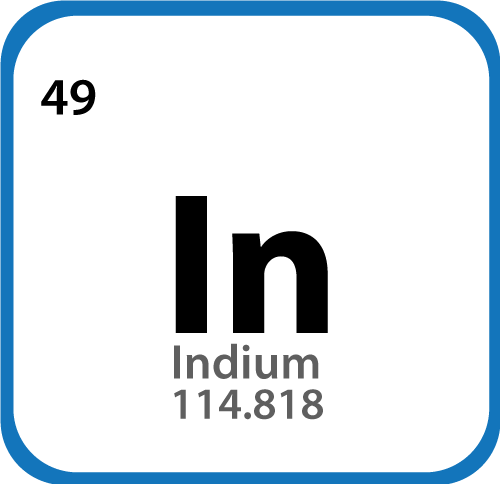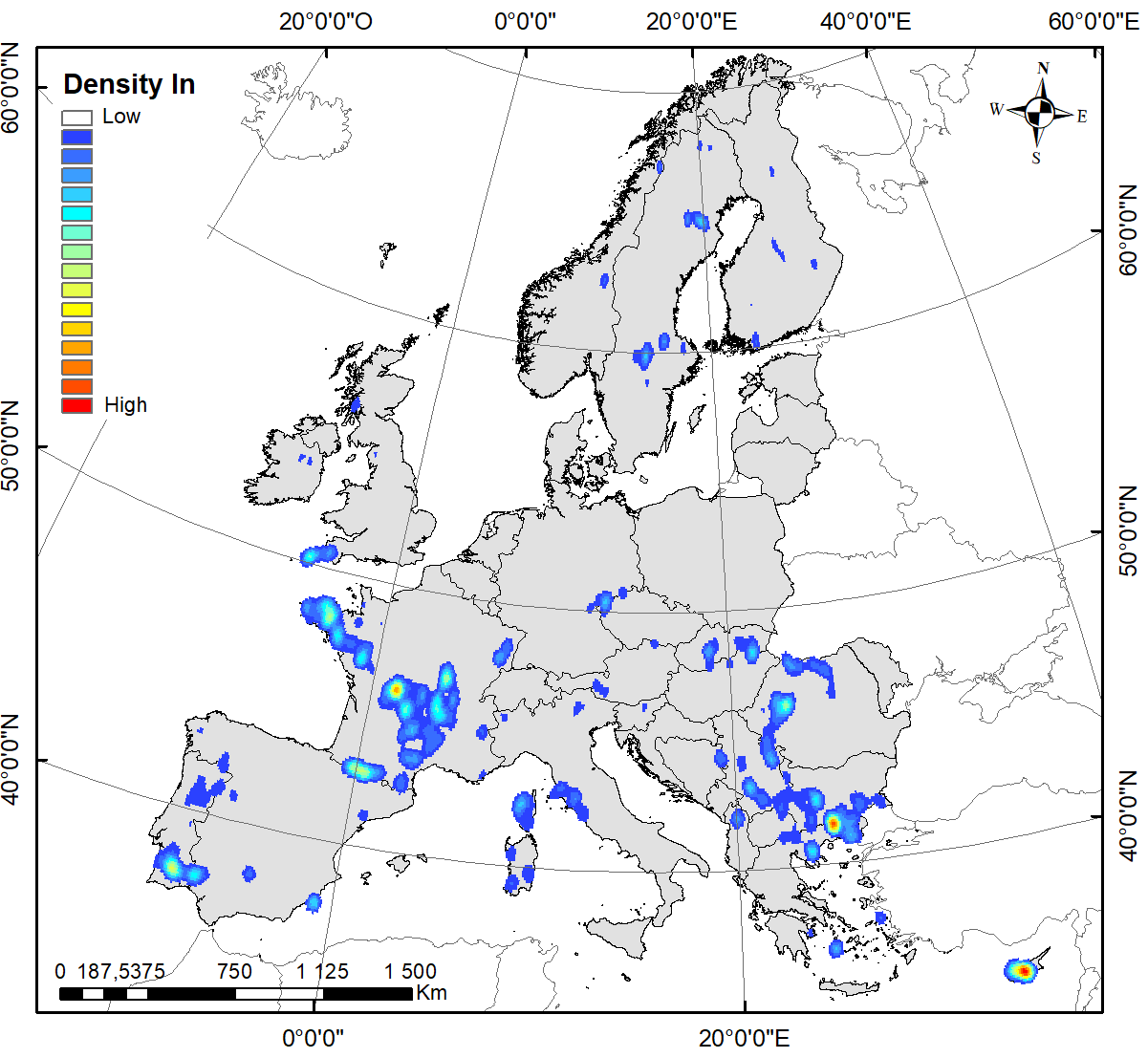About the element
Indium is a chemical element with the symbol In and atomic number 49. Indium is the softest metal that is not an alkali metal. It is a silvery-white metal that resembles tin in appearance. It is a post-transition metal that makes up 0.21 parts per million of the Earth’s crust.

Key facts
- Symbol: In
- Melting point: 156.6 °C
- Atomic number: 49
- Atomic mass: 114.818 u
Indium has a low melting point for a metal: 313.9 degrees Fahrenheit (156.6 degrees Celsius).
Criticality
Most of the targeted by-products elements are Critical Raw Materials (CRMs). CRMs combine raw materials of high importance to the EU economy and of high risk associated with their supply.
Indium is part of the EU 2020 Critical Raw Materials List. Its criticality is considered to be medium.
Main uses
Flat panel displays: Indium-Tin Oxide is used in Flat Panel Displays for televisions, laptops, notebooks and mobile phones. Thin films are also applied to car and aircraft windshields for defogging and de-icing.
Solders: Indium is used as a low-temperature solder and a lead-free solder to improve the thermal fatigue performance of solders used in electronics.
Solar cells: in thin-film solar cell applications, Indium can be used in semiconductor compounds as light absorber material.
And also: in alkaline batteries, as thermal interface materials in electronics, in glass-to-glass or glass-to-metal joints and in a variety of other applications such as in semiconductor compounds in LEDs or laser diodes.
Given its use in PV cells and in batteries, Indium can play a role in enabling low-carbon energy solutions in the EU economy.
Map of kernel density of weighted Indium scores in Europe by DBQ geostatistical method
The map below indicates few areas of potential interest for Indium prospection in Europe. It is part of the “Mapping of by-product potential evaluation” (Deliverable 2.1) led by consortium member BRGM.
This map was made based on the current available data and the DBQ geostatistical method, performing a kernel density calculation. The kernel density calculation is a statistical tool which estimates the probability density function of a random variable.


